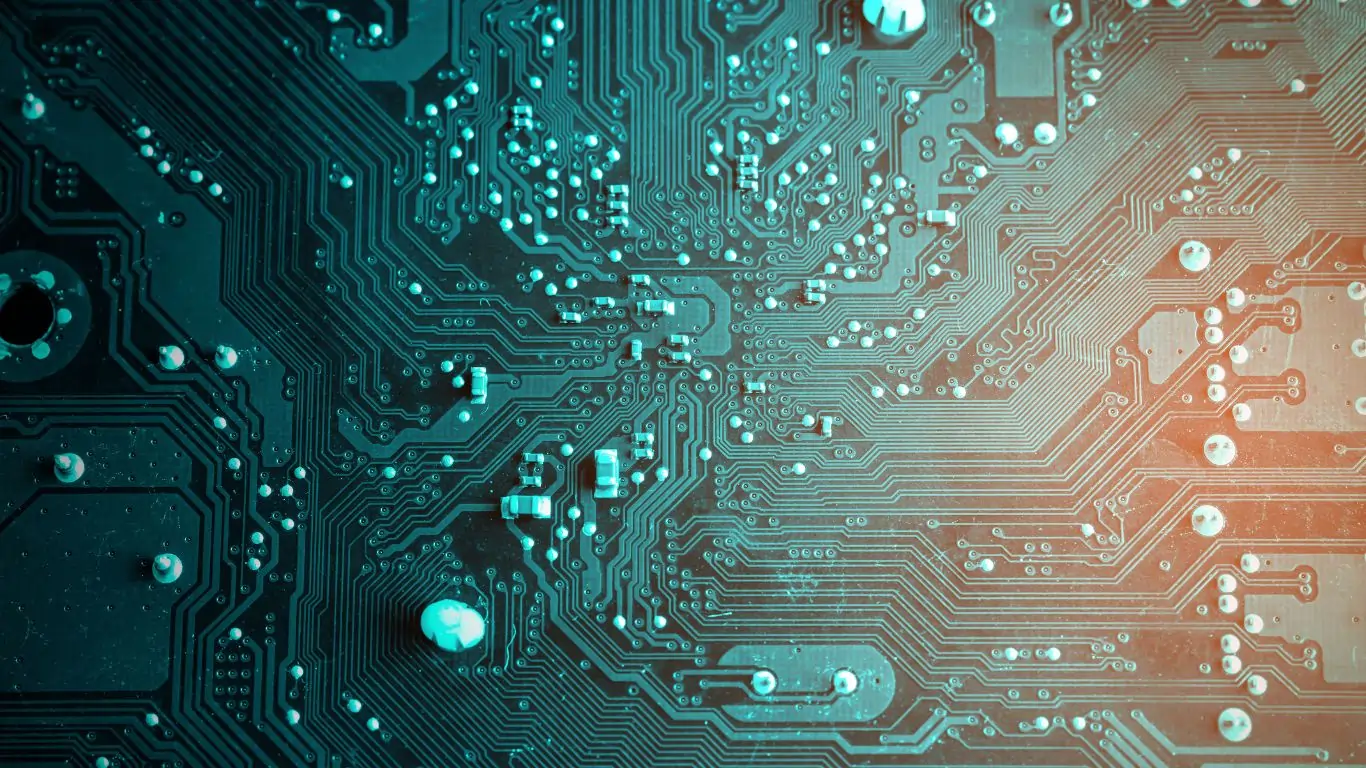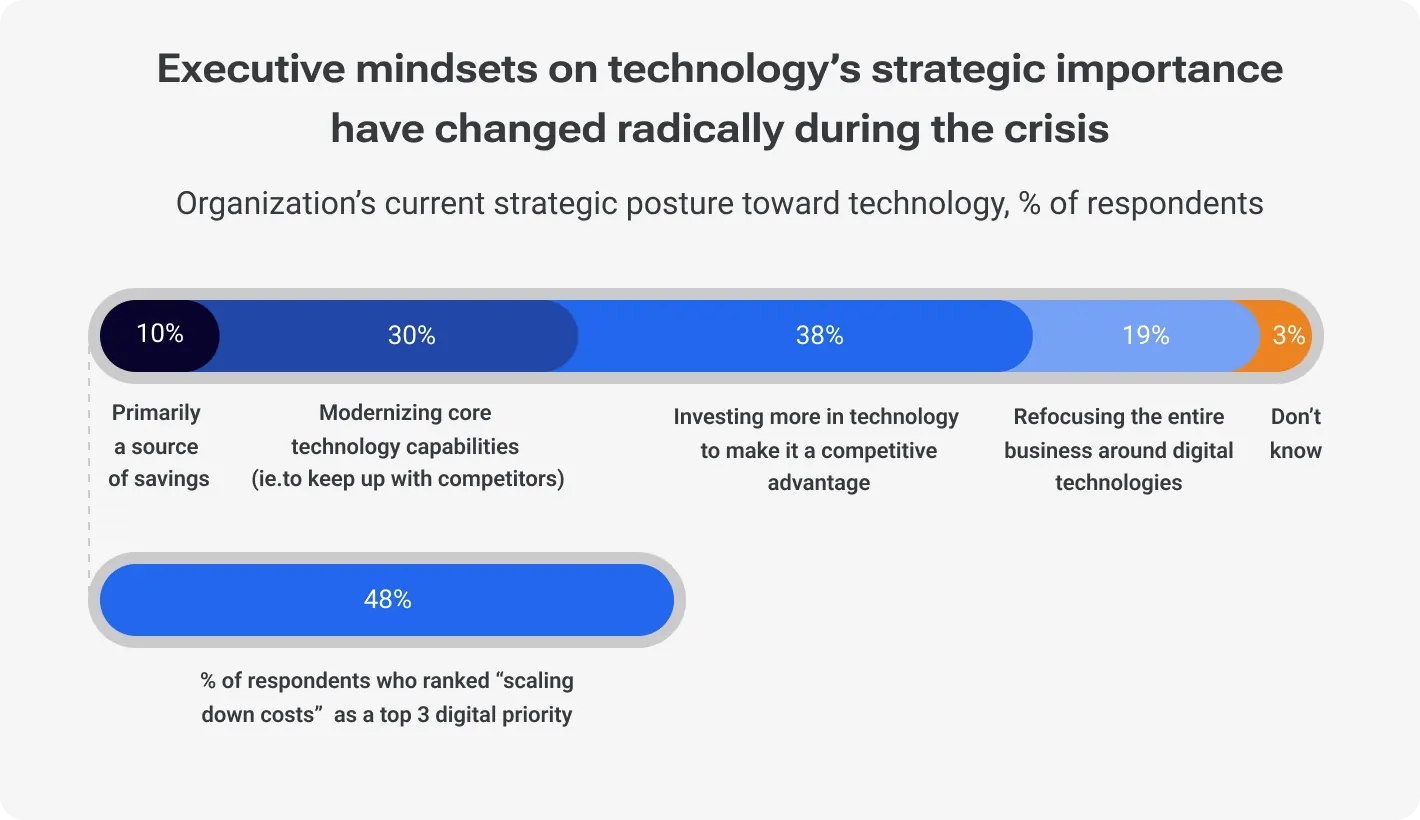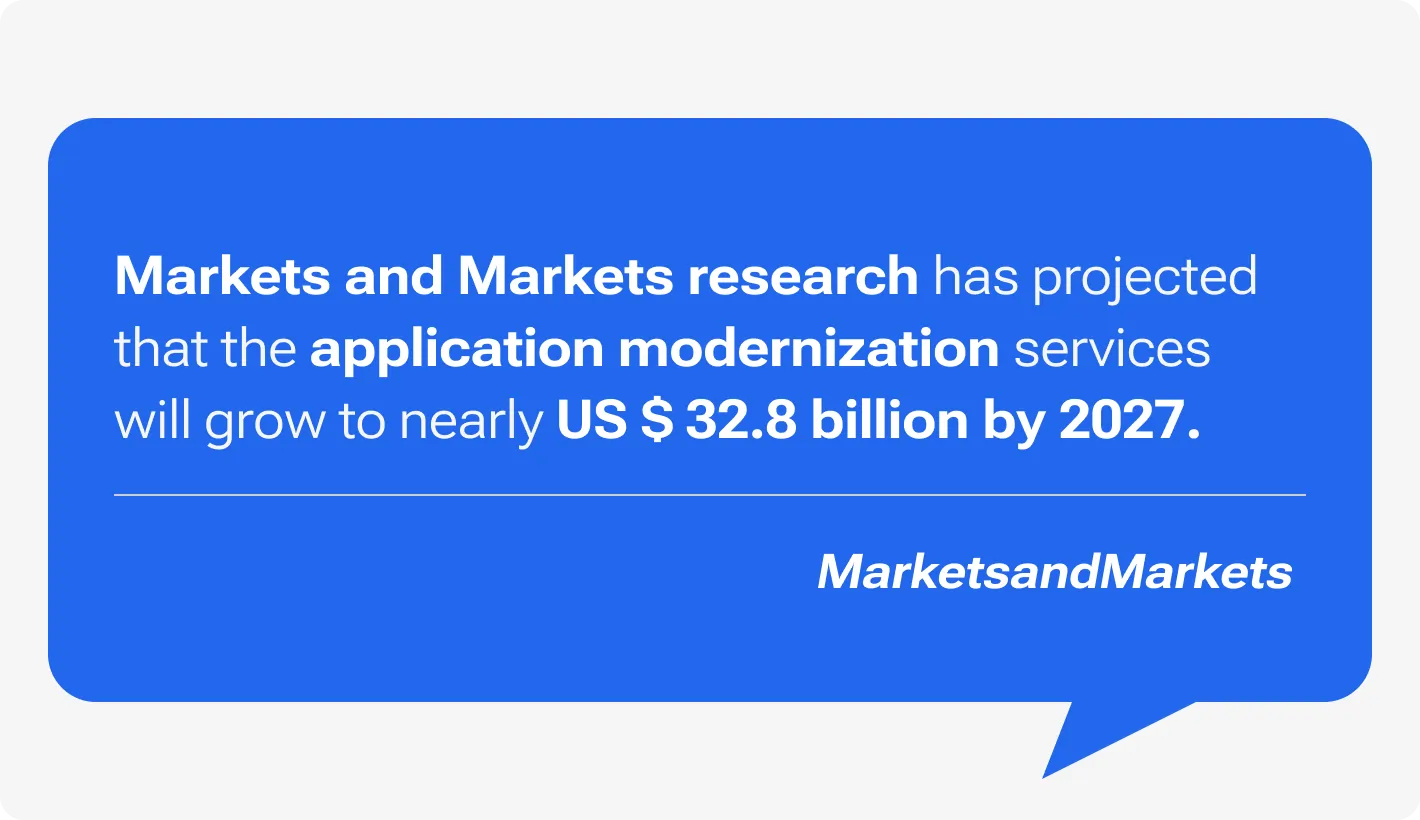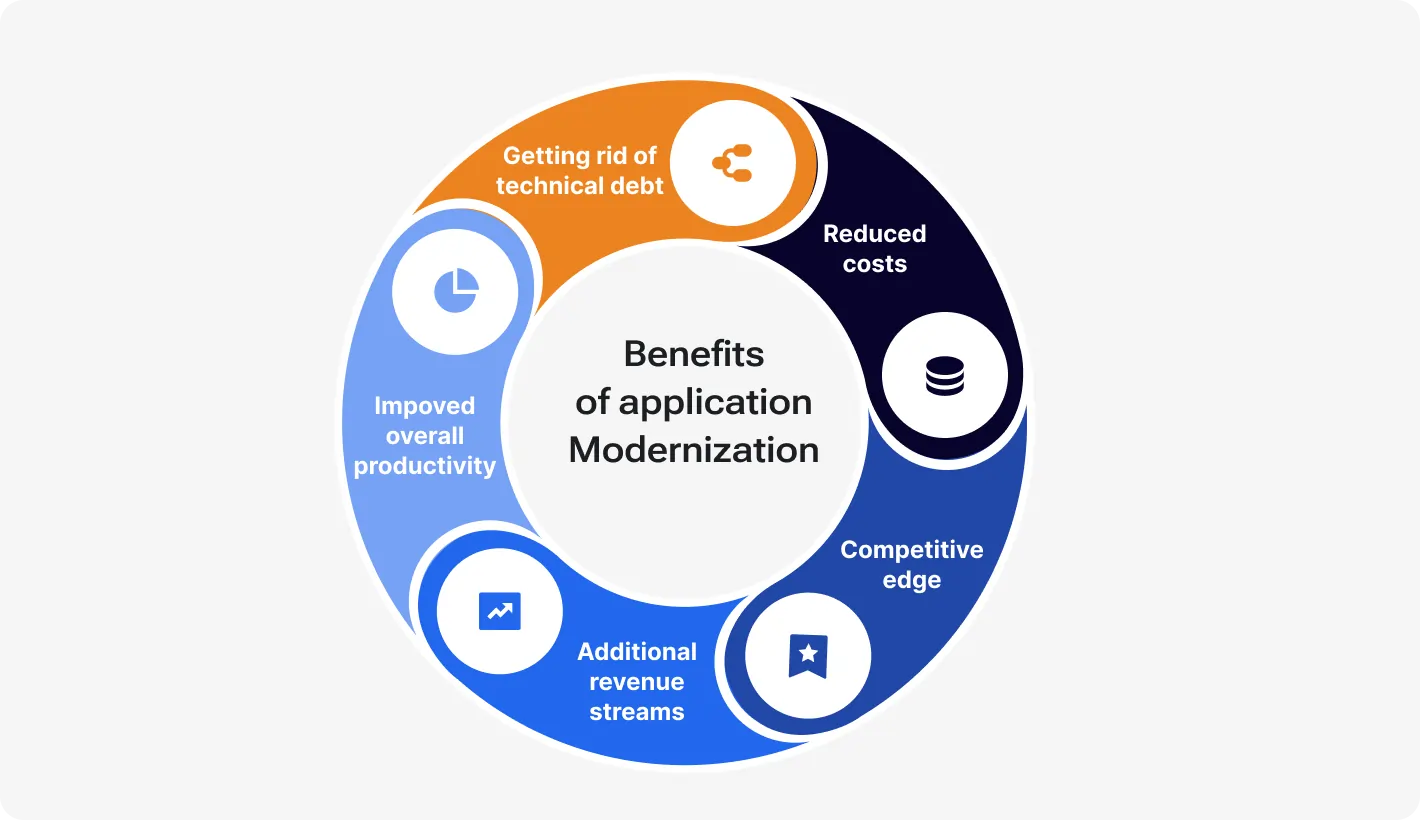Imagine this picture: your business environment turned into a Formula 1 race. So outdated legacy systems make you a cyclist in a bolides race. We feel you: the old looks familiar and clear... and constraining, though. But there is a thing. Over 75% of mature companies that started legacy modernization failed at least one of the planned programs. At the same time, many companies still run on out-of-the-date software, and legacy software increases maintenance costs by at least 15%.
Still not convinced? Well, take a look at Netflix. Yeah, a well-worn example but still. The pioneer in streaming entertainment constantly modernizes its platform, which allows them to offer seamless user experiences and stay ahead of the curve. This approach has propelled them to become a global leader, while their competitor Blockbuster, which clung to its legacy video rental model, ultimately filed for bankruptcy in 2010.
The time is ripe — you should modernize now. But navigating the complexities of legacy application modernization can be daunting. This article outlines a 7-step roadmap that empowers you to chart a course towards a successful digital transformation.
Scale your business effortlessly with modernized IT solutions
Understanding Legacy Application Modernization
Modernization of legacy applications is the strategic process when the company updates and enhances outdated software applications to align with modern technology standards and business requirements. This transformation encloses various approaches, from rehosting systems on the cloud to completely rebuilding them using modern technologies. If you’re seeking to overcome the challenges posed by legacy systems and unlock new opportunities for innovation and growth, you need a plan.
Ignoring the call for system modernization comes with significant drawbacks. Not convinced? Below, we collected some statistics that run deep.
Security vulnerabilities: A fresh 2023 report by Verizon reveals that over 70% of data breaches involved exploiting vulnerabilities in web applications, many of which were built on legacy technologies lacking robust security features.
Integration difficulties: McKinsey are sure that companies struggling with legacy systems are more likely to face challenges integrating with modern applications and platforms (which is obvious), and only a third of those who launched digital transformation initiatives achieved expected results (not so obvious).
High maintenance costs: As we already stated above, legacy systems increase maintenance costs by 15%. In addition, the IDC report found that organizations spending over 80% of their IT budgets on maintaining legacy systems often experience performance bottlenecks and scalability limitations.
Metaphorically speaking, modernizing your legacy applications is about securing your future, unclosing agility and innovation, and unlocking the full potential of your company right now — even in these difficult times.
7-Step Legacy Application Modernization Strategy
Scrutinizing Your IT Architecture and Systems
What is really essential is to conduct a thorough analysis of your existing IT architecture and systems. And the trick is to have done it before diving into changes. Embrace yourself, get armed with six key drivers, and create a clear picture of your current landscape. Okay, jokes aside — mentioned six drivers fall into two categories: business-related and IT-related.
Business-related drivers:
Business alignment: Understand how your legacy app modernization supports your overall business objectives and identify areas where this move can foster better alignment and drive strategic goals.
Business agility: Assess the ability of your current systems to adapt to changing market demands and business needs. Are they hindering your ability to respond quickly to new opportunities or customer needs?
IT-related drivers:
Technical debt: Assess how much technical debt you have accumulated in your legacy systems. Outdated code, aging infrastructure, lack of documentation — that sort of thing. TD can significantly impact maintainability, performance, and security. By the way, we have comprehensive articles on tech debt remediation.
Scalability limitations: Determine if your existing systems possess the capacity to scale and accommodate future growth, both in terms of user base and data volume.
Security vulnerabilities: Assess the security posture of your legacy applications and identify any potential vulnerabilities that could expose your data and systems to cyberattacks.
Right Path: Assessing Chosen Approaches
We don’t state that 7Rs is the only framework but probably the most appropriate though. Each approach — whether it's rehosting, re-platforming, refactoring, or another strategy — comes with its own set of benefits, challenges, and implications for the organization's long-term success.
Relocating: Simply put, this strategy is all about migrating to the cloud without needing new hardware, changes to existing procedures, or app rewriting.
Rehosting: This is something similar; it means migrating your legacy application to a new environment, often the cloud. The main difference is that rehosting doesn’t touch hardware at all. Imagine lifting your old furniture and placing it in a brand-new apartment — the furniture remains the same, but the environment is vastly improved.
Replatforming: This one means moving the application logic to a new platform while preserving the existing functionalities. Like old houses by replacing outdated fixtures and electrical systems but maintaining the original layout. In return, you get improved performance, security, and integration capabilities compared to rehosting.
Refactoring: This one is just another word for “restructuring”. And this involves reorganizing and optimizing the existing code base to operate in the new environment. Have you ever decluttered your attic? This one is the same story — you don't get rid of any items, but you improve the overall space and functionality. Refactoring often leads to better code maintainability, performance, and readability.
Rearchitecting: When you take a rearchitecting approach, you completely redesign the application architecture to leverage modern technologies and best practices. Turning back to our housing metaphor, it’s like demolishing an old house and building a brand-new one on the same foundation. This way, you retain the location but create a completely new structure with modern features. Radical a bit, yet effective.
Re-architecting legacy applications: Main risks & benefit
Rebuild: This strategy involves developing a completely new application from scratch based on modern technologies and functionalities. The same metaphor, the same brand-new house, but on an entirely new plot of land. You simply discard the old structure and build a new one from the ground up. This move allows for complete customization and unlocks new functionalities. However, it requires significant investment and resources.
Replace: Just replacing the legacy application with a commercially available solution that meets your specific needs. A pre-built house instead of building a new one from scratch — the most appropriate comparison. This offers a faster time to value and reduced development costs.
Business Case for Modernization: When Investments Are Worthy
Modernization is a strategic investment, and let’s face it, when you’re trying to secure buy-in from stakeholders, you work your fingers to the bone to build a compelling business case that clearly articulates the expected benefits and return on investment (ROI).
Why is it really important? Because such efforts:
Secure funding and resources: The main dilemma is how to get resources, especially financial ones. For this reason, a well-defined case is the best aider as it demonstrates the financial viability of the project and helps secure the necessary support from key decision-makers.
Align stakeholders: The process of crafting the case lies in communication and collaboration. Another chance to ensure everyone understands the project's goals and potential benefits.
Provide a roadmap for success: Cool when you know where you are heading off. For this reason, the case will map your way throughout the project, paying attention to the expected outcomes and key performance indicators for measuring success.
What factors to consider in your business case?
Return on Investment: Quantify the expected financial benefits of modernization, such as cost savings, revenue growth, or improved efficiency.
Total Cost of Ownership (TCO): Factor in all associated costs, including licensing fees, migration expenses, and ongoing maintenance.
Balance of Your Strategy: The case must provide a clear-cut picture of how modernization aligns with your overall business objectives. Take into account the digital transformation strategy — another important part of the case.
Include Risk-Related Considerations: When building a business case, the risk part is one of the most important since it allows to get the whole picture of any initiative.
With a persuasive business case, you can effectively get across the value proposition of enterprise application modernization and gain the necessary support to move forward with your transformation journey.
Map Isn’t a Territory, Yet You Could Do With It
We live in times when data is probably the most valuable currency as it is the foundation of any effective decision and, hence, profit. Thus, before embarking on the transformation process, it's essential to take stock of your data landscape.
Sounds “simple”: just identify all relevant data sources, understand their relationships and dependencies, and assess their quality, accuracy, and relevance to your business. Such a helicopter view of the data landscape allows you to find consolidation, rationalization, optimization, and just strike the balance.
Understanding what data exists and where it resides is crucial since, with this, you can ensure all relevant information is migrated to the new system, preventing data loss or inconsistencies.
Data ownership is key in this case. And a comprehensive inventory empowers you to establish it, access controls, and security measures, safeguarding your valuable information.
As an additional perk, the inventory process often uncovers data duplication, inaccuracies, and inconsistencies, allowing you to address these issues and ensure the quality of your data in the modernized system.
How to conduct data inventorying?
Well, again — all is easy as pie (not actually):
Identify data sources: Catalog all systems and applications that store data relevant to your legacy application.
Define data types: Classify the data based on its nature, such as customer information, financial records, or operational data.
Map data to business processes: Understand how data flows through various business processes and identify any dependencies between the legacy application and other systems.
Enrich thorough data inventorying and mapping with your time and resources — this way, you lay a solid foundation for a smooth and successful modernization experience.
Legacy System Modernization Team is The Main Asset
When it comes to the legacy modernization approach, a dedicated team is probably the most important thing to keep an eye on. Because this is the team that ensures the success of these initiatives.
The most obvious trick here is to assemble a cross-functional team comprising members with diverse expertise in areas such as software development, project management, change management, and user experience. Less obvious is to also attract specialists with various “life” experiences as such people tried more different things, including tech solutions, and are aware of pitfalls and pain points.
Legacy app modernization is not an exception. Assembling a team with the right blend of skills and experience is crucial for navigating the technical complexities and ensuring a smooth transition.
Who to include in a modernization team?
Stakeholders and DMs: Decision makers must be present on this team more as part of the collaboration framework (DACI, RATCI, etc.) Then, obviously — representatives from key business units. Such team members must, by default, understand the functionalities of the legacy application and can provide insights into user needs.
Technical architects: Specialists with an in-depth understanding of the legacy system's architecture and the potential modernization approaches.
Devs: Skilled coders with a knack for leveraging modern technologies and flexibility to variate modernization approaches.
Data specialists: When modernizing legacy applications, you’ll definitely need experts in handling data. In all senses: migration, mapping, and ensuring data quality throughout the transfer.
Project managers: Old-hand visioners-within-project who can effectively plan, manage, and track the progress of the modernization.
Two tips: how to maximize the collaboration outcome
Invest in people’s development. Your business has a direct correlation with their professional evolution and upskilling. This is an unhidden investment in your own success.
Open communication is key. A team is called a team because each member supports and helps the other. This is the easiest way to ensure everyone is sharing project goals and is ready to overcome potential challenges.
Setting Timelines and Measuring Success
Now, it’s time to draw a clear map for the legacy modernization strategy in the head. This map should consist of a well-defined timeline outlining the project's phases and a set of success metrics that gauge the effectiveness of the efforts.
Start by working closely with your modernization team to create a detailed project plan that outlines key deadlines and dependencies. Break down the project into manageable phases and allocate resources accordingly to ensure smooth execution.
Realistic Timeline: How to Establish
-
Break down the modernization process into smaller, manageable phases. This way, you can move over from one attempt to another, and such an iterative approach will help identify and address potential roadblocks early on.
-
Factor in dependencies and resource availability. Let’s face it, in the early stages, founders are often too enthusiastic and can paint the town red before there is an opportunity for that. Be realistic about the time required for each phase, instead. Consider dependencies on other teams or external factors like vendor lead times.
-
SMART goal setting: old but gold. When establishing success metrics, consider both quantitative (system performance improvements, cost savings, and ROI) and qualitative measures (user satisfaction, adoption rates, and business impact). Don’t shy away from the old yet proven SMART approach: metrics should be specific, measurable, achievable, relevant, and time-bound (SMART) metrics.
Elaboration on Key Success Metrics
Define measurable objectives: Align your success metrics with your overall business goals for modernization. These goals might include enhanced performance, improved user experience, or increased cost savings.
Track relevant KPIs: Choose KPIs that quantify your progress towards achieving your objectives. Application uptime, response times, user adoption rates, or return on investment (ROI) — we can’t suggest what to measure in exactly your case before we delve into details with you.
Monitor progress and course-correct as needed: Regularly monitor your KPIs, identify areas where adjustments are needed, and adapt your approach to ensure the project remains on track toward achieving its desired outcomes.
Change is the New Normal and is a Winning Strategy
The success of any legacy application modernization project hinges not only on technical prowess but also on user adoption. You can use the most sophisticated systems but will get zero-equal results if your employees are not equipped and encouraged to embrace the change. This is where a well-defined change management strategy comes into play.
Why is a change management strategy crucial?
Any change is stressful. And the strategic approach minimizes the stress and resistance and fosters user buy-in. You just engage employees, look for their concerns and address them, and highlight the benefits of the modernized application — the fastest way whereby you can mitigate resistance and encourage user adoption.
Effective communication and training programs are also very helpful. Employees will understand the new system's functionalities and navigate the transition seamlessly, minimizing disruptions to daily workflows. Maximize the benefits of modernization. Emphasize at general meetings that by adopting new technologies, they can leverage the full potential of the modernized application and unlock the true value of the time-effort investments.
Key elements of a winning adoption strategy
Transparent communication: Keep your team informed throughout the modernization process, explaining the cause behind the change and its anticipated benefits.
Training and upskilling: This is you who’s responsible for the future results. Therefore, it’s in your best interest to provide comprehensive training programs tailored to user roles and needs.
Change champions: Leaders are key, no matter what you want to employ: technology or a new kind of sport. Identify and empower internal champions who can advocate for the modernized application, answer user questions, and provide ongoing support.
Feedback: Actively solicit feedback from users throughout the process and use it to refine your approach and make the application more user-friendly.
Modernization Payoffs
Legacy application modernization brings about various benefits. Firstly, it leads to increased operational efficiency by streamlining workflows, automating processes, and eliminating manual tasks. For example, a manufacturing company modernizes its legacy inventory management system and thus improves production cycle time.
Second benefit: modernization enhances scalability and flexibility, allowing one to adapt to changing business needs and scale resources dynamically. Consider a retail chain (a conditional Walmart) that improved its ability to handle peak shopping seasons by migrating its legacy e-commerce platform to a cloud-based infrastructure.
Third one: modernizing legacy systems helps to improve customer experience. Faster response times, personalized interactions, and seamless omnichannel experiences — all that stuff. A financial services firm can hit customer satisfaction scores at a level of 20% after modernizing its legacy CRM system.
Finally, modernization reduces IT costs and risks by retiring outdated technology, consolidating redundant systems, and strengthening cybersecurity measures. A conditional healthcare provider can reduce its IT maintenance costs and mitigate security vulnerabilities by migrating from legacy on-premises servers to a secure cloud environment.
To sum it up
Heading off a legacy app modernization journey is all about careful planning, confident yet flexible execution, and ongoing management. We provided a 7-step legacy enterprise application modernization strategy whereby you can navigate the complexities of modernization and maximize the value of your investments.
Let’s run through key takeaways:
Legacy application modernization is a nowadays must-have, a strategic imperative for businesses seeking to thrive in 2025 and further.
A well-defined roadmap and a comprehensive approach are crucial for navigating the complexities of modernization successfully.
Invest heavily in modernization — this is the fastest way to unlock enhanced agility, improved user experience, increased security, reduced costs, and future-proofing capabilities.
Top Devico’s recommendations, based on years of experience:
-
Scrutinize your legacy applications to identify legacy software modernization needs and possibilities.
-
Take your time — collect information without rush and build a robust business case to secure buy-in from stakeholders. On the other hand, you should understand the price of delays in securing the necessary resources.
-
Think over partnering with old-hand specialists to modernize legacy applications breezily.
-
User adoption must be a top priority. Secure it by effective communication, training, and support programs.
And we can’t help but admit the importance of continuous improvement and innovation culture. That comes along with optimized processes and exceptional value to customers and stakeholders. This, in turn, inevitably leads to overall success and increased profit.
Reduce costs and enhance performance by modernizing your IT infrastructure








